Desertification was supposed to be the ‘greatest environmental challenge of our time.’ Why are experts now worried about greening?
By Fred Pearce | August 12, 2024
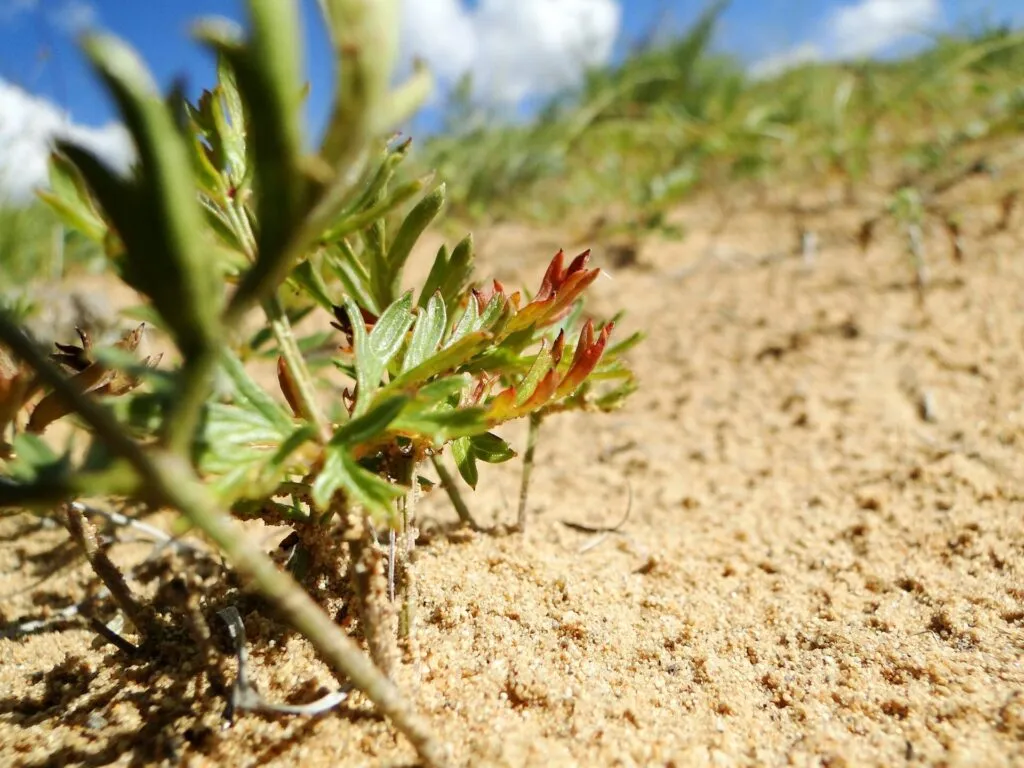 Plants growing in the sand dunes close to Hustai National Park in Mongolia. Photographer A. Omer Karamollaoglu writes, "Even though it was late in summer (normally a very dry season) the dunes were literally green. Our host, Batbayar said the dunes didn't have vegetation four years ago." (A. Omer Karamollaoglu/Wikipedia)
Plants growing in the sand dunes close to Hustai National Park in Mongolia. Photographer A. Omer Karamollaoglu writes, "Even though it was late in summer (normally a very dry season) the dunes were literally green. Our host, Batbayar said the dunes didn't have vegetation four years ago." (A. Omer Karamollaoglu/Wikipedia)
Editor’s note: This story was originally published by Yale Environment 360. It appears here as part of the Climate Desk collaboration.
Southeast Australia has been getting hotter and drier. Droughts have lengthened, and temperatures regularly soar above 95 degrees F (35 degrees C). Bush fires abound. But somehow, its woodlands keep growing. One of the more extreme and volatile ecosystems on the planet is defying meteorology and becoming greener.
And Australia is far from alone. From Africa’s Sahel to arid western India, and the deserts of northern China to southern Africa, the story is the same. “Greening is happening in most of the drylands globally, despite increasing aridity,” says Jason Evans, a water-cycle researcher at the Climate Change Research Centre of the University of New South Wales in Sydney, Australia.
What is going on? The primary reason, most recent studies conclude, is the 50-percent rise in carbon dioxide concentrations in the atmosphere since preindustrial times. This increased C02 is not just driving climate change, but also fast-tracking photosynthesis in plants. By allowing them to use scarce water more efficiently, the CO2-rich air fertilizes vegetation growth in even some of the driest places.
As we pump yet more CO2 into the air, arid-land greening seems set to continue, according to two recent modeling studies. But ecologists warn that, despite appearances, going green may have downsides for arid ecosystems and for the people who depend on them. Desert plants and animals will often lose out, and the extra vegetation may soak up scarce water supplies.
Drylands cover roughly 40 percent of the planet’s land surface. The deserts at their core are surrounded by wide expanses of savanna grass, dry woodlands, and sometimes irrigated fields. They are home to more than a third of the world’s population and are among the most biodiverse ecosystems in the world, according to the International Union for Conservation of Nature, the international organization for conservation scientists.
Over the past half-century, most drylands have been experiencing a decline in rainfall, along with higher temperatures and greater rates of evaporation. Many have also been degraded by poor farming practices and overgrazing of livestock. Climate scientists and ecologists alike have until recently presumed that this combination of growing meteorological aridity and pressure from human activities would lead to less vegetation. They have routinely warned of widespread desertification, which U.N. officials have called “the greatest environmental challenge of our time.”
Yet in most drylands, this anticipated desertification has not happened. Rather than shriveling and dying, vegetation is usually growing faster and expanding its terrain, while deserts are retreating. This, researchers of the world’s carbon and water cycles say, is largely due to the extra CO2 in the atmosphere.
Photosynthesis is the process by which plants grow by absorbing CO2 through stomata in their leaves and converting it into plant matter. That process requires water, which in arid regions is often the limiting factor for plant growth. Higher concentrations of CO2 in the air both allow easier photosynthesis and enable plants to use less water in the process.
Agricultural scientists have long known about the benefits of additional CO2 for plant growth. Farmers sometimes dose the enclosed atmospheres of greenhouses with the gas to boost yields. In effect, we are now doing the same thing to the entire atmosphere.
The negative impacts of hotter, drier climates have not gone away; but in most arid lands this CO2 fertilization effect is proving more powerful. This supercharging of plant growth seems unlikely to be short-lived if fossil-fuel burning causes atmospheric concentrations of CO2 to continue rising. A new modeling study published last month found that it will, if anything, become more marked in the coming decades. “Most of the global drylands are projected to see an increase in vegetation productivity,” says Evans, a coauthor of the study.
This unexpected upside to CO2 will have implications for the pace of climate change itself. Instead of desiccating ecosystems and causing the release of their CO2, thus accelerating climate change, anthropogenic releases of the gas into the atmosphere are allowing vegetation to increase its capture of carbon — helping, if only modestly, to reduce it.
For some time, there has been growing evidence of global greening in all biomes, not just arid lands. Back in 2016, remote-sensing specialist Ranga Myneni of Boston University, with a team of 32 others from eight countries, studied NASA satellite images to discern trends in vegetation. They concluded that between a quarter and a half of the planet’s vegetated areas had since 1980 shown an increase in their leaf area index, a standard measure of the abundance of vegetation.
Myneni’s subsequent statistical analysis suggested that some 70 percent of this global greening could be attributed to CO2 fertilization. Other factors included local changes in nitrogen deposition from air pollution, rainfall, and land cover.
The findings appeared to be confirmed by a 2021 study at University of California, Berkeley assessing the rate of photosynthesis in a range of ecosystems worldwide. Using a network of “flux towers” that measure the exchange of gases between vegetation and the air above, carbon-cycle researcher Trevor Keenan and colleagues concluded that since 1982 there had been a 12 percent increase in photosynthesis, with CO2 fertilization again the primary cause.
The extra CO2 uptake by faster-growing plants is moderating the build-up of the gas in the atmosphere, says Keenan. “It’s not stopping climate change by any means, but it is helping us slow it down.”
This global greening is seen most dramatically — and with the greatest impact on ecosystems and the lives of people dependent on them — in drylands. It is not happening in all arid regions. Some places are browning. But not many.
A 2020 assessment by Evans and Arden Burrell, a remote-sensing researcher at the Woodwell Climate Research Center in Falmouth, Massachusetts, found that about 6 percent of drylands had experienced desertification since 1982, only a quarter as much as previous estimates based on meteorological conditions. These areas included much of the U.S. Southwest, drought-prone northeast Brazil, and parts of Central Asia.
But Evans and Burrell found that significant greening was much more extensive than previously acknowledged — and more than three times greater than desertification. It encompassed 41 percent of the world’s drylands, from India to the African Sahel and northern China to southeastern Australia.
Last year, Guolong Zhang and colleagues at Lanzhou University in China reported finding a global divergence between aridity and leaf area in drylands during the past three decades. Zhang says the reason for the “decoupling” lies in “the fertilization effect of CO2.”
Why did past predictions of rampant desertification prove so wrong? One reason, says Evans, is that researchers came to believe that their standard measure of the dryness of the atmosphere, the aridity index, would reliably predict the potential for vegetation to grow.
The aridity index is the ratio between precipitation and potential moisture loss through evaporation. The lower the ratio, the more arid the conditions. When global CO2 concentrations are unchanging, the read-across to vegetation works fine; but with rising atmospheric CO2 concentrations, plants use moisture more efficiently and their growth no longer reflects the meteorology. If rising CO2 levels have a bigger effect than declining precipitation, then aridity is accompanied by greening.
Water is not the only potential limiting factor in plant growth in arid lands. The availability of nutrients, particularly nitrogen, is another. That raises questions about whether the benefits of CO2 fertilization will continue to increase. But recent climate modeling suggests that the greening of drylands is unlikely to slow before mid-century and may speed up.
Last year, Ziwei Liu, a hydrology modeler at Tsinghau University in Beijing, concluded that, taking account of the impact of CO2 fertilization on aridity, drylands will expand by only 5 percent by the end of this century, but vegetation productivity will increase by around 50 percent.
And last month, Burrell, Evans, and Xinyue Zhang, also of the University of New South Wales, found the same thing in the most detailed modeling to date. The new projections “show continued increases in aridity due to climate change,” but “less than 4 percent of dryland areas [will] desertify,” they concluded. The exact extent of future greening will depend on how much CO2 accumulates in the atmosphere, says Evans. But under all scenarios, their modeling forecasts that most drylands will be greener.
The effects of this greening are already profound. The woodlands of eastern Australia have seen “repeated record-breaking droughts and heat waves” over the past four decades, says Sami Rifai, now at the University of Adelaide. Yet during that time “CO2 fertilization has outpaced growing aridity to drive greening of Australian woody ecosystems.”
Some researchers argue that other factors, such as how farmers use the land, could be locally important. Poor land use can often cause desertification, such as when trees are chopped down for firewood, bad crop practices cause soil erosion, or too many livestock are put on the grasslands that comprise much of utilized arid lands. But farmers also sometimes “green” barren land by growing irrigated crops or nurturing trees in their fields. In some of the most dramatic areas of greening, many forces may be at play.
A study in 2019 by Myneni and others concluded that land-use management “is a key driver of the ‘Greening Earth,’ accounting for over a third, and probably more, of the observed net increase in green leaf area.”
Take the Sahel region on the southern fringes of the Sahara Desert. Vegetation growth there has benefitted from the extra CO2 found in the atmosphere everywhere. But the region has also seen the return of rains after the devastating droughts of the 1970s and 1980s. And in some places, farmers have changed the way they farm, nurturing the natural regeneration of trees in their fields to provide shade and nutrients for their crops.
Geographer Chris Reij of the World Resources Institute in Washington, D.C. has tracked this trend among farmers in Niger. He estimates that there are now some 200 million more trees across some 12.5 million acres of previously almost treeless land in the south of the country.
“If CO2 fertilization was the determining factor in regreening here, it would happen everywhere in a region, but it does not,” he says. Instead, the greening stops abruptly at the border with Nigeria, where farmers show little interest in nurturing trees.
Evans agrees that the exceptional greening his study found in southern Niger is probably related to farmer regeneration of trees. And he says that Indian farmers too have played an important role. In arid states such as Gujarat, they are pumping underground water to irrigate crops on once-barren land. The resulting increase in soil moisture shows up as greening, Indra Tripathi, a water-resource engineer at the Indian Institute of Technology in Gandhinagar, Gujarat, concluded in a study published in March.
So is this all good news? Far from it, ecologists warn. Most obviously, the greening created by agricultural irrigation of fields can play havoc with scarce water reserves and obliterate valuable arid-land ecosystems.
And there are downsides to the greening of natural ecosystems too. “Save the deserts” may not be a popular environmental message, but arid ecosystems matter. They are important habitats for species uniquely adapted to scarce water, whether plants that can survive decades without rainfall or desert beetles that have evolved novel geometry on their bodies to harvest fog moisture.
Such specialist species could lose out as the environments they have evolved to exploit change. Outsiders may move in. Indeed, the greening of ecosystems itself may be a sign of invasions by fast-growing alien plants better adapted to making the most of elevated CO2 levels, growing fast and wiping out the locals.
Long-term studies by University of California, Riverside in the Sonoran Desert show that shorter shrubs better adapted to less rainfall and higher temperatures are moving in at the expense of native plants, creating an impression of greening that marks an ecological breakdown.
In some places, extra vegetation in arid environments is also increasing the risk of bushfires. Four years ago, flames ripped through southeast Australia, consuming an area the size of South Carolina. Foresters blamed the conflagrations on a combination of drought, high temperatures, and an accumulation of combustible woody vegetation, which analysis suggests was in part the result of CO2 fertilization. The poster child of greening went up in flames.
The world was wrong to expect that climate change would trigger rapid and widespread desertification in the world’s arid lands. In fact, the reverse is happening. But it could be a similar folly to imagine that the dramatic greening now visible in satellite images across many of those same regions is a reason to declare their troubles over.

Together, we make the world safer.
The Bulletin elevates expert voices above the noise. But as an independent nonprofit organization, our operations depend on the support of readers like you. Help us continue to deliver quality journalism that holds leaders accountable. Your support of our work at any level is important. In return, we promise our coverage will be understandable, influential, vigilant, solution-oriented, and fair-minded. Together we can make a difference.
Keywords: climate change, co2 fertilization, desertification, greening
Topics: Climate Change



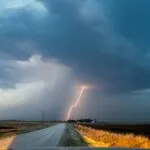



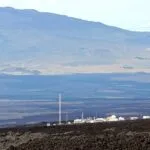
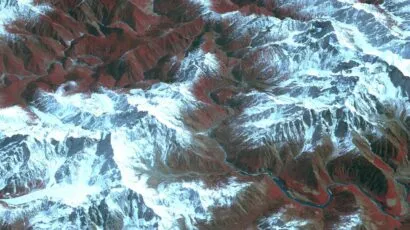


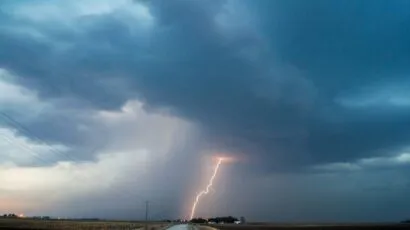

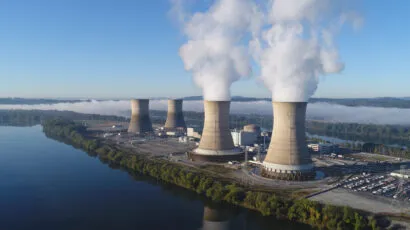
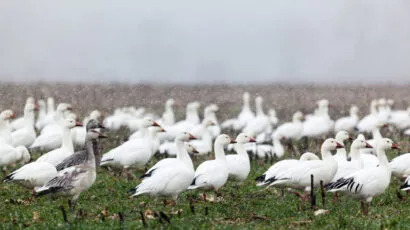

According to Allan Savory, whose TED talk is very popular, it’s not the numbers of animals grazing that is “overgrazing”, but rather a combination of inadequate herd density, and excessive recovery time, and the absence of the effect of a milling herd whose hooves can break a hard crust. I enjoyed this article, but felt compelled to point out that this paradigm shift in understanding animal agriculture.
Why is what is seen in an environment now considered good and change to it considered a threat. Who are we to say which species should win and which should lose? Desertification was considered a threat now greening is considered a threat why not just accept change to the climate will happen?
The last paragraph says it all: “The world was wrong to expect that climate change would trigger rapid and widespread desertification in the world’s arid lands. In fact, the reverse is happening. But it could be a similar folly to imagine that the dramatic greening now visible in satellite images across many of those same regions is a reason to declare their troubles over.” Yes, but it is also similar folly to once again issue sweeping theoretical predictions of negative outcomes. Perhaps the living earth system is quite capable of adjusting to changing atmospheric conditions to keep itself in a… Read more »
Climate scientists and ecologists alike have until recently presumed that this combination of growing meteorological aridity and pressure from human activities would lead to less vegetation. They have routinely warned of widespread desertification, which U.N. officials have called “the greatest environmental challenge of our time.”
Can we stop listening to these lying grant seekers yet ?
Have they ever been right ?
Do we really have to regard the depths of the Little Ice Age as the normal climate ?
Can we dispense with this junk science yet ?
Look on the bright side. What are the positive effects of greening? For instance can more people grow food for themselves? That would be a great benefit. More green means more oxygen in the air. That is a great bonus for people with breathing issues. Turn that lemon into lemonade.
On the matter of greening, I suspected this was the case given the apparently lush growth of vines along the roads in Washington DC. Fred Pearce has confirmed my suspicions. His books and articles highlight trends that are counterintuitive and thus insightful. I’m glad his work is included in the Bulletin.